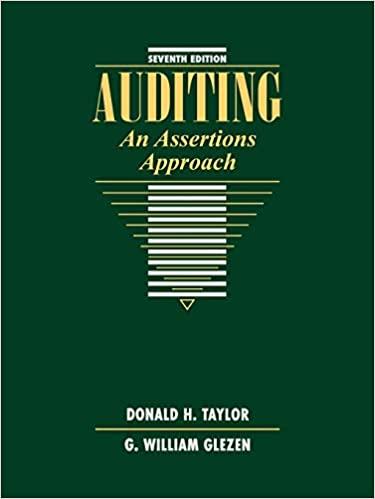Question
Smith Recliners manufactures leather recliners and uses flexible budgeting and a standard cost system. Smith allocates overhead based on yards of direct materials. The company's
Smith Recliners manufactures leather recliners and uses flexible budgeting and a standard cost system.
Smith allocates overhead based on yards of direct materials. The company's performance report includes the following selected data:
| Static Budget (1,000 recliners) | Actual Results (980 recliners) | |||
|---|---|---|---|---|
| Sales | (1,000 recliners x $515 each) | $515,000 | ||
| $470,400 | |||
| Variable Manufacturing Costs: | ||||
| Direct Materials | (6,000 yds. @ $8.50/yd.) (6,143 yds. @ $8.30/yd.) | 51,000 | 50,987 | |
| Direct Labor | (10,000 DLHr @ $11.00/ DLHr) (9,600 DLHr @ $11.10/ DLHr) | 110,000 | 106,560 | |
| Variable Overhead | (6,000 yds. @ $5.00/yds.) (6,143 yds. @ $6.40/yd) | 30,000 | 39,315 | |
| Fixed Manufacturing Costs: | ||||
| Fixed Overhead | 60,000 | 62,000 | ||
| Total Cost of Goods Sold | 251,000 | 258,862 | ||
| Gross Profit | $264,000 | $211,538 |
Requirement 1:
| 1. | Prepare a flexible budget based on the actual number of recliners sold. |
| 2. | Compute the cost variance and the efficiency variance for direct materials and for direct labor. For manufacturing overhead, compute the variable overhead cost, variable overhead efficiency, fixed overhead cost, and fixed overhead volume variances. Round to the nearest dollar. |
| 3. | Have Smith's managers done a good job or a poor job controlling materials, labor, and overhead costs? Why? |
| 4. | Describe how Smith's managers can benefit from the standard costing system. |
Requirement 2:
Compute the cost variance and the efficiency variance for direct materials and for direct labor. For manufacturing overhead, compute the variable overhead cost, variable overhead efficiency, fixed overhead cost, and fixed overhead volume variances. Round to the nearest dollar.
Begin with the cost variances. Select the required formulas, compute the cost variances for direct materials and direct labor, and identify whether each variance is favorable (F) or unfavorable (U). (Round your answers to the nearest whole dollar. Abbreviations used: AC = actual cost; AQ = actual quantity; FOH = fixed overhead; SC = standard cost; SQ = standard quantity.)
Next compute the efficiency variances. Select the required formulas, compute the efficiency variances for direct materials and direct labor, and identify whether each variance is favorable (F) or unfavorable (U). (Round your answers to the nearest whole dollar. Abbreviations used: AC = actual cost; AQ = actual quantity; FOH = fixed overhead; SC = standard cost; SQ = standard quantity.)
Now compute the variable overhead cost and efficiency variances. Select the required formulas, compute the variable overhead cost and efficiency variances, and identify whether each variance is favorable (F) or unfavorable (U). (Round your answers to the nearest whole dollar. Abbreviations used: AC = actual cost; AQ = actual quantity; FOH = fixed overhead; SC = standard cost; SQ = standard quantity; VOH = variable overhead.)
Now compute the fixed overhead cost and volume variances. Select the required formulas, compute the fixed overhead cost and volume variances, and identify whether each variance is favorable (F) or unfavorable (U). (Round your answers to the nearest whole dollar. Abbreviations used: AC = actual cost; AQ = actual quantity; FOH = fixed overhead; SC = standard cost; SQ = standard quantity.)
Requirement 3:
Have Smith's managers done a good job or a poor job controlling materials, labor, and overhead costs? Why?
The variances computed in Requirement 2 suggest that the managers have done a
good
poor
reasonable
job controlling materials and labor costs. The
favorable
unfavorable
direct materials cost variance and direct labor efficiency variance help offset the
favorable
unfavorable
direct labor cost variance and direct materials efficiency variance. Managers have done a
good
poor
reasonable
job controlling overhead costs as evidenced by the fact that
all
none
some
of the overhead variances are
favorable
unfavorable
.
Requirement 4:
Describe how
Smith's
managers can benefit from the standard costing system.
Standard costing helps managers do the following:
Create New Products?
Decrease Accounting Costs?
Develop more efficient production methods?
Identify performance standards?
Increase production levels?
Increase sales volume?
Prepare master budget?
Set sales prices of products and services?
Set target levels of performance for flexible budgets?
Step by Step Solution
There are 3 Steps involved in it
Step: 1

Get Instant Access to Expert-Tailored Solutions
See step-by-step solutions with expert insights and AI powered tools for academic success
Step: 2

Step: 3

Ace Your Homework with AI
Get the answers you need in no time with our AI-driven, step-by-step assistance
Get Started


